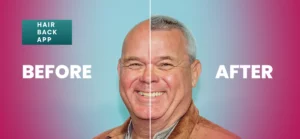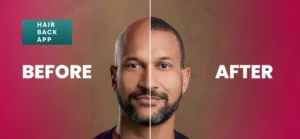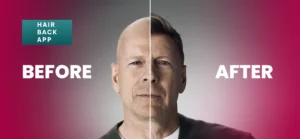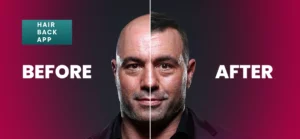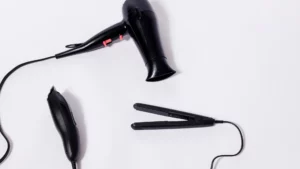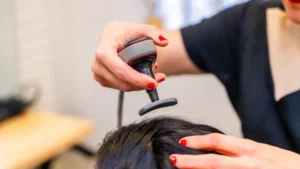Alopecia Areata is an autoimmune condition that causes sudden hair loss, affecting millions of people worldwide. This condition can be distressing, impacting not only physical appearance but also self-esteem.
While various treatments exist, hair transplant procedures have emerged as a potential solution for some patients.
But is hair transplantation a viable option for Alopecia Areata? This guide explores the causes, treatment options, and effectiveness of hair transplants for those dealing with this form of hair loss.
Understanding Alopecia Areata
Alopecia Areata is an autoimmune disorder where the immune system mistakenly attacks hair follicles, leading to hair loss. The exact cause is unknown, but it is believed to be triggered by several factors, including:
- Genetic predisposition: A family history of autoimmune conditions increases the likelihood of developing Alopecia Areata.
- Stress: Emotional and physical stress may act as a trigger, worsening or initiating hair loss episodes.
- Environmental factors: Exposure to toxins, infections, or other external influences can contribute to the onset of the condition.
- Hormonal imbalances: Changes in hormone levels, especially during puberty, pregnancy, or menopause, may play a role.
- Nutritional deficiencies: Lack of essential vitamins such as Vitamin D, iron, or zinc can impact hair health and immune function.
Common symptoms include:
- Patchy hair loss in circular or oval shapes, typically appearing suddenly.
- Scalp itching, burning, or tingling before hair falls out.
- Sudden hair shedding with no apparent cause.
- Loss of hair in other areas, including eyebrows, eyelashes, and body hair.
- Brittle, pitted, or ridged fingernails, which can be an early sign of the condition.
Types of Alopecia Areata:
- Alopecia Areata (Patchy): Hair loss occurs in small, round patches on the scalp or other parts of the body.
- Alopecia Totalis: Complete hair loss on the scalp.
- Alopecia Universalis: Loss of all body hair, including eyebrows, eyelashes, and facial hair.
- Ophiasis Pattern Alopecia: Hair loss in a band-like pattern around the sides and lower back of the scalp.
- Diffuse Alopecia Areata: Thinning of hair across the entire scalp, resembling female or male pattern baldness.
Understanding the type of Alopecia Areata is crucial in determining whether a hair transplant is a suitable treatment option. Some individuals may experience spontaneous hair regrowth, while others may face recurring hair loss cycles. In cases where the condition is stable, a hair transplant could be considered as a restoration method.
For individuals dealing with senescent alopecia—a form of age-related hair thinning—exploring alternative treatments such as PRP therapy, medications, or red light therapy might be more effective before considering surgical options.
Hair Transplant for Alopecia Areata
Hair transplantation is generally performed on individuals with permanent hair loss, such as male or female pattern baldness. However, Alopecia Areata is unpredictable, and hair loss can be temporary or recurrent, making transplantation a challenging option.
A hair transplant might be suitable for individuals who:
- Have stable areas of hair loss that have not regrown for several years
- Do not experience recurring episodes of alopecia
- Have enough donor hair for transplantation
- Have undergone other treatments without success
Hair Transplant Techniques:
- Follicular Unit Extraction (FUE): Individual hair follicles are extracted from a donor area and transplanted to bald spots. This method is minimally invasive and leaves no linear scars.
- Follicular Unit Transplantation (FUT): A strip of scalp is removed from the donor area, and hair follicles are extracted and implanted. This method is more suitable for patients needing larger grafts.
In cases of non-scarring alopecia, where hair follicles remain intact, treatments such as PRP therapy or red light therapy may be considered before opting for surgery.
Procedure Overview:
- Consultation: The doctor assesses the severity of hair loss and determines suitability.
- Donor Hair Extraction: Hair follicles are harvested from the back of the scalp or other body areas.
- Graft Preparation: The extracted follicles are prepared for implantation.
- Implantation: The follicles are transplanted into bald areas following a natural hairline pattern.
- Recovery: Healing begins, and new hair growth starts within a few months.

Effectiveness & Considerations
Unlike other forms of hair loss, Alopecia Areata presents unique challenges due to its unpredictable nature. Even after a successful transplant, there’s a risk that the immune system may attack the newly transplanted follicles, leading to poor hair retention or patchy regrowth.
Success rates vary widely, but hair transplants can be effective if the alopecia remains stable for an extended period.
A key factor in determining the effectiveness of a transplant is whether the immune response has subsided. In cases where the condition is active, hair follicles may continue to be attacked, making the procedure ineffective.
However, when Alopecia Areata enters a dormant phase, a hair transplant can provide long-term results.
Challenges and Limitations
Before considering a hair transplant, it’s important to be aware of potential challenges and limitations associated with Alopecia Areata:
- Unpredictable Regrowth: Alopecia Areata may cause new hair loss, making transplants ineffective. The condition can reactivate even after years of stability.
- Immune System Attack: The immune system may continue to recognize transplanted hair as a target, leading to further hair loss.
- Limited Donor Hair: If hair loss spreads, donor areas (typically the back of the scalp) may become insufficient, limiting the success of the procedure.
- Scalp Condition and Scarring: Some individuals with non-scarring alopecia (such as Alopecia Areata) have no damage to hair follicles, making them candidates for non-surgical treatments. However, if scarring occurs from repeated inflammation, transplant success may be reduced.
- Uneven Growth Patterns: Some patients experience inconsistent regrowth, with certain areas responding well while others do not. This can result in an unnatural appearance.
Alternative Treatments
Before committing to a hair transplant, many patients explore alternative treatments to stimulate natural hair regrowth. These options may improve hair density and potentially reduce the need for surgery.
- Corticosteroid Injections: Used to suppress the immune response, these injections help halt hair loss and promote regrowth in some cases.
- Minoxidil (Rogaine): A topical treatment that stimulates hair follicles and can encourage hair growth in people with mild Alopecia Areata.
- Immunotherapy: Chemical agents applied to the scalp to trigger an immune response, which may reverse hair loss. This is commonly used for larger bald patches.
- JAK Inhibitors: A breakthrough medication class that targets immune pathways and prevents hair loss. Some studies show promising results, but long-term effects are still under evaluation.
- Red light therapy: A non-invasive treatment that stimulates blood circulation and encourages follicle regeneration, making it a potential option for individuals with thinning hair.
- Platelet-Rich Plasma (PRP) Therapy: Involves injecting growth factors into the scalp to enhance hair regeneration and improve transplant results.
Pre-Transplant Preparation
To improve the success rate of a hair transplant, proper preparation is essential. Candidates should follow these pre-transplant steps:
✅ Consult with a Dermatologist or Hair Transplant Specialist – A professional will determine whether a hair transplant is suitable based on hair loss pattern and medical history.
✅ Medical Tests – These may include blood work and scalp biopsies to evaluate immune activity and the stability of hair loss.
✅ Lifestyle Adjustments – Patients are advised to quit smoking, reduce alcohol consumption, and avoid blood-thinning medications that may interfere with healing.
✅ Setting Realistic Expectations – Understanding that full hair restoration is not always guaranteed and multiple sessions may be required.
Post-Transplant Care
Recovery and post-operative care play a critical role in determining the long-term success of a hair transplant. Proper care minimizes complications and enhances graft survival.
Recovery Process and Healing Timeline:
- First Week: Mild swelling, redness, and scabbing occur in the transplanted area. Patients must avoid touching the scalp to prevent infection.
- First Month: Scabbing resolves, and shedding of transplanted hairs is expected (a normal part of the process known as shock loss).
- 3-6 Months: New hair growth begins, although results may still be patchy. Continued treatment (such as PRP therapy) can enhance growth.
- 12-18 Months:Full results are typically visible, with newly transplanted hair blending in naturally.
Dos and Don’ts After Surgery:
✅ Do:
- Follow prescribed medications (such as antibiotics and anti-inflammatory drugs).
- Avoid scratching or rubbing the scalp to prevent disturbing grafts.
- Sleep with the head elevated to reduce swelling.
- Use gentle hair-washing techniques as advised by the specialist.
❌ Don’t:
- Engage in heavy exercise for at least two weeks.
- Expose the scalp to direct sunlight for an extended period.
- Apply harsh chemicals or styling products for a few weeks.
Long-Term Maintenance:
- Regular Check-ups – Periodic visits to the surgeon ensure graft health and stability.
- Scalp Hygiene – Using gentle shampoos prevents infections and promotes a healthy scalp.
- Follow-Up Treatments – PRP therapy, red light therapy, or Minoxidil may support long-term hair retention.
Risks and Side Effects
Hair transplants, like any surgical procedure, come with potential risks. Candidates should be aware of the following complications:
- Infection: Rare but possible if post-operative care is not properly followed.
- Swelling and Redness: Temporary but can last a few days post-surgery.
- Scarring: FUT procedures can leave a visible scar, whereas FUE leaves small puncture marks that fade over time.
- Shock Loss: Temporary shedding of transplanted hair before regrowth begins.
- Uneven Growth: Some patients experience inconsistent growth rates, requiring additional procedures for correction.
Discussing potential side effects with a specialist ensures informed decision-making before undergoing the procedure.
Cost and Accessibility
Factors Affecting Cost:
- Clinic and Surgeon’s Expertise: Highly experienced specialists charge more but offer higher success rates.
- Number of Grafts Required: More grafts increase the price, especially for large bald areas.
- Location of the Clinic: Prices vary based on country and clinic reputation.
Price Range:
- On average, the cost of a hair transplant ranges from $3,000 to $15,000, depending on the complexity of the procedure.
- Additional follow-up treatments such as PRP therapy or medications may add to the total expense.
Where to Get the Procedure Done:
Patients should seek board-certified specialists and accredited clinics for the best results. Some of the most popular destinations for hair transplants include:
- Turkey – Known for its affordable, high-quality hair transplant services.
- India – A cost-effective option with advanced medical facilities.
- United States – Provides state-of-the-art techniques, but at a higher cost.
- United Kingdom – Offers world-class procedures, though pricing tends to be on the higher end.
Patient Testimonials and Success Stories
Many patients with Alopecia Areata have reported mixed results with hair transplants. While some individuals have experienced successful long-term regrowth, others have seen recurrence of hair loss, often due to the unpredictable nature of the condition.
The success of a hair transplant largely depends on the stability of Alopecia Areata, the patient’s immune response, and proper post-operative care.
Some individuals with localized and stable Alopecia Areata have had positive outcomes, with transplanted hair growing and remaining intact for years.
Others, particularly those with aggressive or recurring forms of the condition, have faced setbacks as their immune system continued attacking the new follicles.
Before and After Results:
- Case studies and clinical reports provide valuable insights into hair transplant effectiveness for Alopecia Areata.
- Many patients share before-and-after photos documenting their journey, offering realistic expectations for others considering the procedure.
- Reviewing patient experiences and consulting a hair transplant specialist can help determine whether the procedure is a viable solution.
Conclusion
Hair transplants for Alopecia Areata remain a complex and highly individual decision. While some patients experience success, others may face challenges due to the unpredictable nature of the condition.
Before opting for a transplant, it’s crucial to explore alternative treatments, ensure hair loss is stable, and consult with a qualified specialist.
For those struggling with Alopecia Areata, a personalized treatment plan—whether surgical or non-surgical—can provide the best chance of restoring confidence and achieving long-term hair regrowth.
For individuals looking to hide a receding hairline, there are also non-surgical solutions such as hair fibers, wigs, and scalp micropigmentation.


